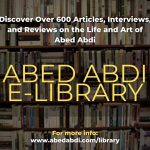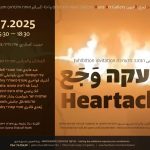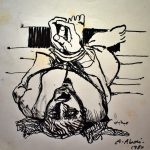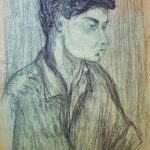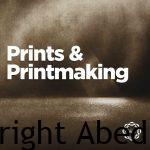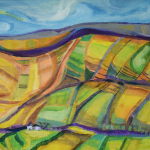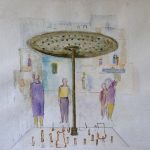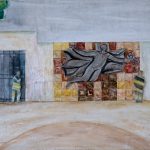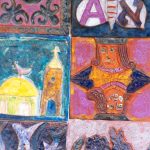
It is hardly known that the GDR’s (German Democratic Republic) network of contacts and exchange relationships in the field of visual art and architecture spanned almost the entire globe. Forms of this contact could be, for example, exhibition cooperations, artists’ trips, or student exchanges.
Against this background, a broad transcultural perspective on artistic production in the GDR is essential to fundamentally re-situate the history of art in the GDR as an “art history of contact” (Kravagna 2013).Art in Networks – The GDR and its Global Relations aims to establish this new perspective and to communicate it to the public in the form of a digital platform.
Art in Networks aims to make visible the connections between artists, architects, museums, and other cultural actors between the GDR and countries in Africa, Asia, and Latin America, and to trace the international networks that emerged in the process. Using individual “nodes” as examples, the project will examine where and how forms of private and institutional artistic exchange took shape. To what extent did cultural-political relationships materialize? Where did the boundaries of official exchange lie within the political framework? How were they sometimes transgressed in private? Where can traces of these contacts still be found today?
For this purpose, text and video contributions are created, which are mainly based on interviews with contemporary witnesses. The contributions are visualized in a timeline that is intended to go beyond the linear development of the GDR’s international relations in the field of art and to show the ongoing emergence of networks up to the present. Focal points result from the individual research of the contributors. In addition to the interviews with contemporary witnesses, academic experts will offer interdisciplinary and international perspectives on the topics of Art in Networks. ..
Art in Networks explores the possibilities of oral art history as a method to link memories of contemporary witnesses with the materiality of works, artifacts and other sources in video interviews. The contemporary and personal perspective of the interviewees on past encounters, experiences and events also highlights the effective and emotional dimension of these art history(s).

For example, the Armenian-Lebanese artist Emmanuel Guiragossian began his studies in Dresden in 1974 and built a friendship with painter A. R. Penck. The Palestinian painter Abed Abi studied (born 1942) at the art academy HfBK in Dresden between 1964 and 1971. In an interview, he talks about his friendhship with Lea Grundig and he recalls how his studies shaped his life’s work as an artist.
Abdi’s artistic subjets include impressions of life in the GDR and portraits of fellow students, but also draw on his experiences of being a refugee and of losing one’s home. They are based on his childhood memories of the Nakba, the displacement of Arabic Palestinians from the territory of Israel around 1948. The theme of refugees connected him with Lea Grundig, who as a Jew emigrated from Germany to Palestine during the Holocaust and also artistically processed her own experiences of flight.
explore the content and see the video interview with Abed Abdi at the original website

